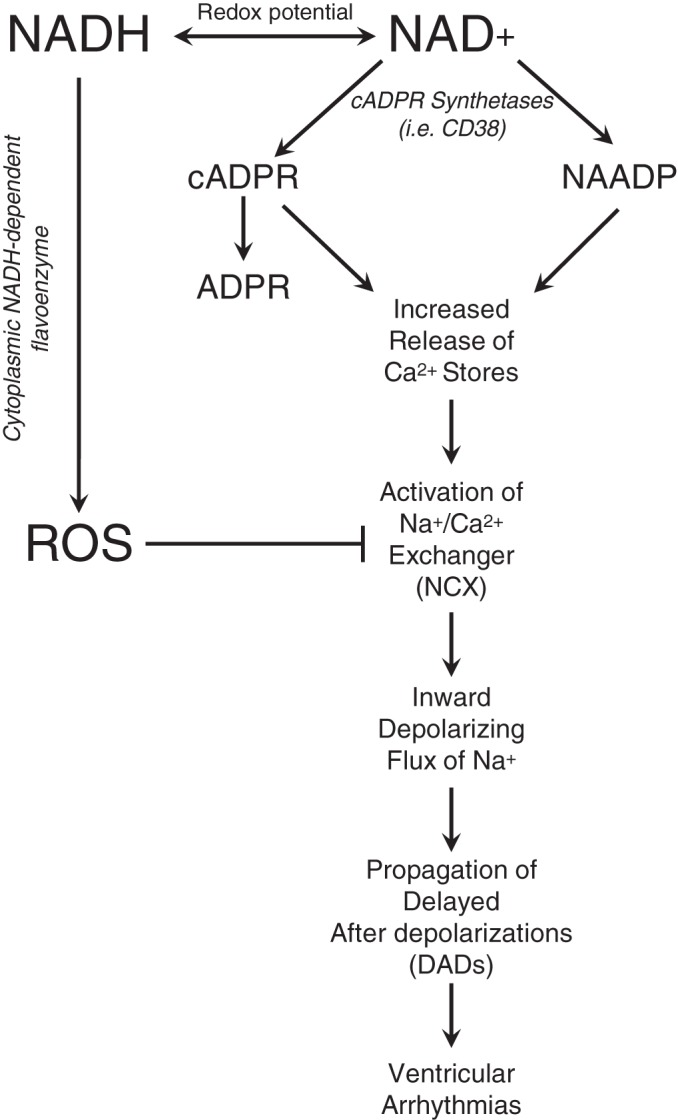Fig. 4.

NAD+ and Ca2+ signaling in arrhythmogenesis. NAD+ can be converted to cADP-ribose (cADPR) and nicotinic acid adenine dinucleotide phosphate (NAADP) by cADPR synthetases, including CD38, which can serve as both a cyclase and hydrolase for the subsequent conversion of cADPR to acylated ADP-ribose (ADPR). cADPR and NAADP trigger a cascade of events, including the activation of the Na+/Ca2+ exchanger (NCX), that may lead to the propagation of ventricular arrhythmias. NADH-dependent reactive oxygen species (ROS) accumulation by an unidentified cytoplasmic flavoprotein oxidase has been shown to inhibit NCX. Collectively, redox regulation and NAD+ metabolism hold the ability to regulate Ca2+ handling and electrical activity in the heart.
